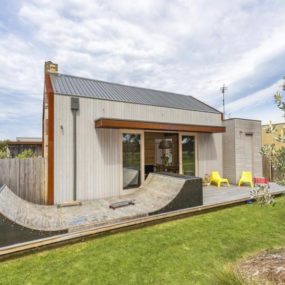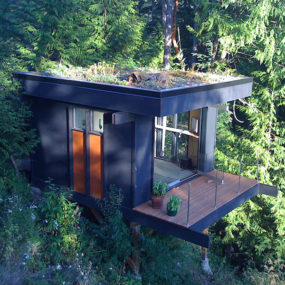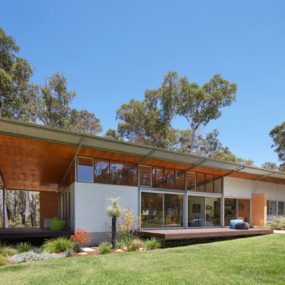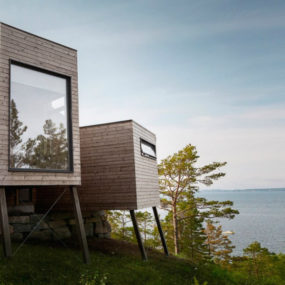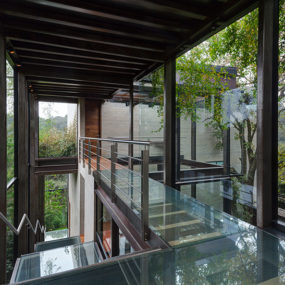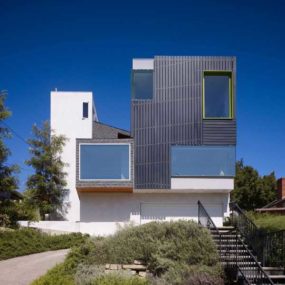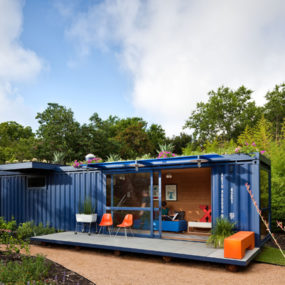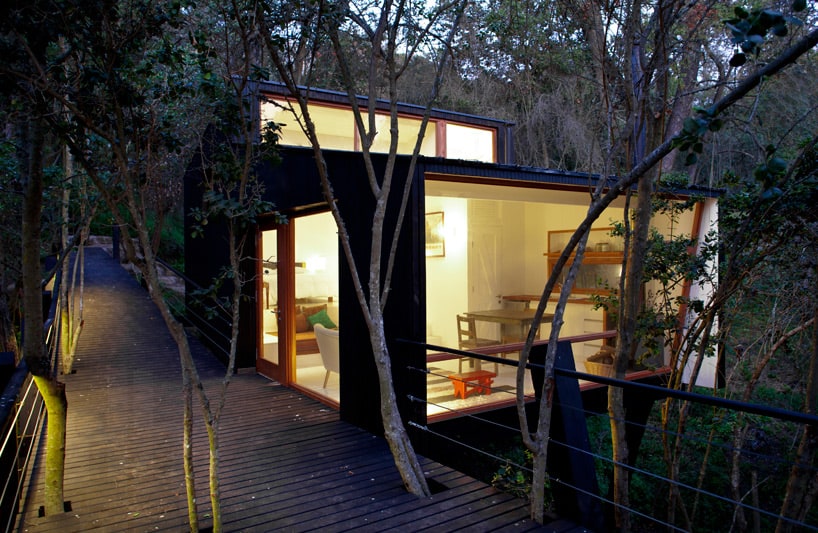
The Quebrada House is located along a creek on a forested site near Curacavi, Chile and to reduce the cabins impact on its surroundings Unarquitectura designed the access to the home to be a long and elevated ramp supported by diagonally braced pilotis. As It was impossible to avoid trees in the construction of the walkway, the architects simply chose to build around them with voids in the decking allowing the trunks to pass through uninterrupted.
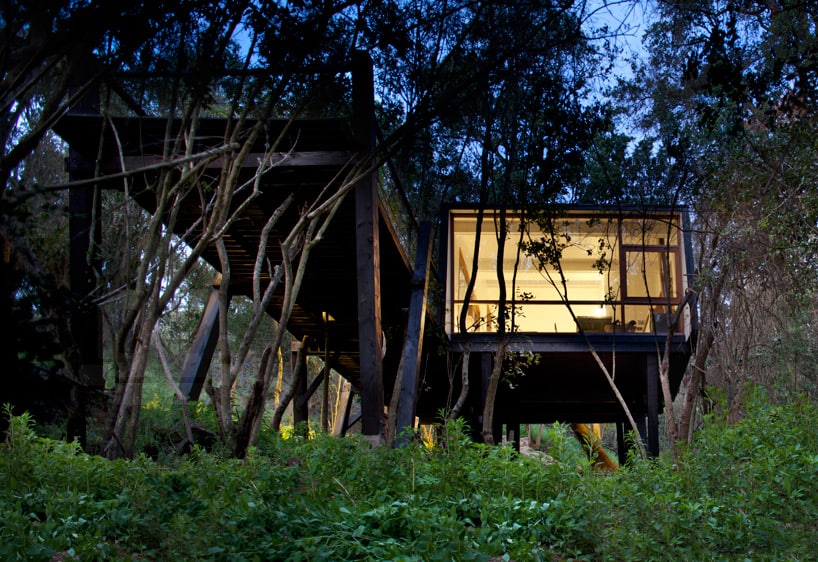
The ramp is not the only elevated structure – the cabin is also supported on Pillars with its entry off of the bridged ramp.
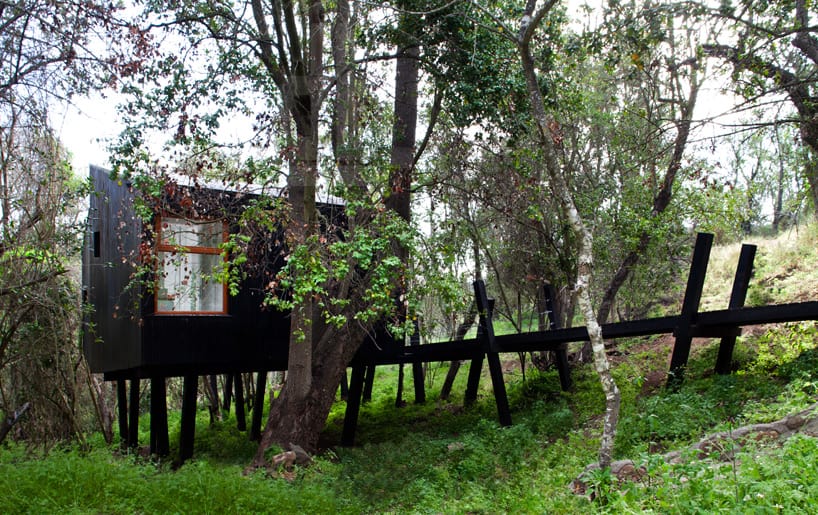
By rising both the home and the walkway on pillars and pilotis the home can easily accommodate the undulating ground beneath it and the forest wildlife can continue to travel uninterrupted from one side to the other.
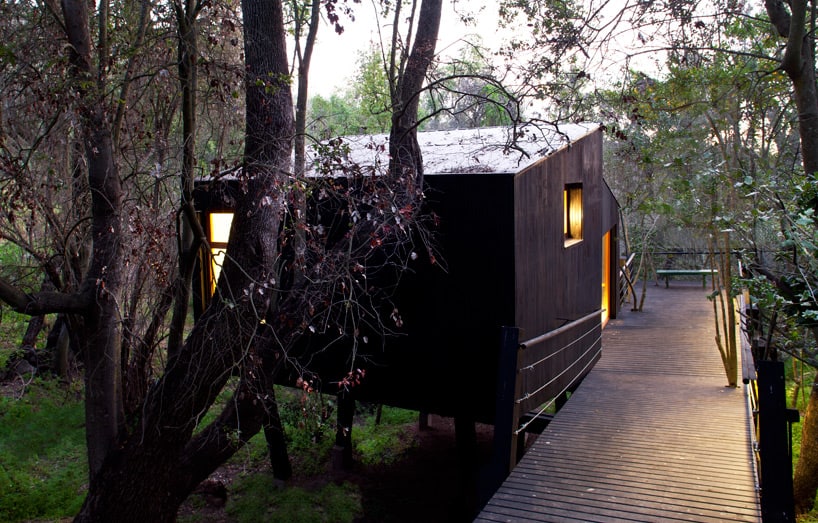
Both the walkway and the home are built using Pine wood with the decking left naturally weathered and the siding painted black, allowing it to recede into the forest shadows.

The entry leads straight into the social zone with the living and dining areas positioned at the front to take advantage of the cabin’s wall of glazings. The walkway continues past the entry to allow for an outdoor dining and social zone.
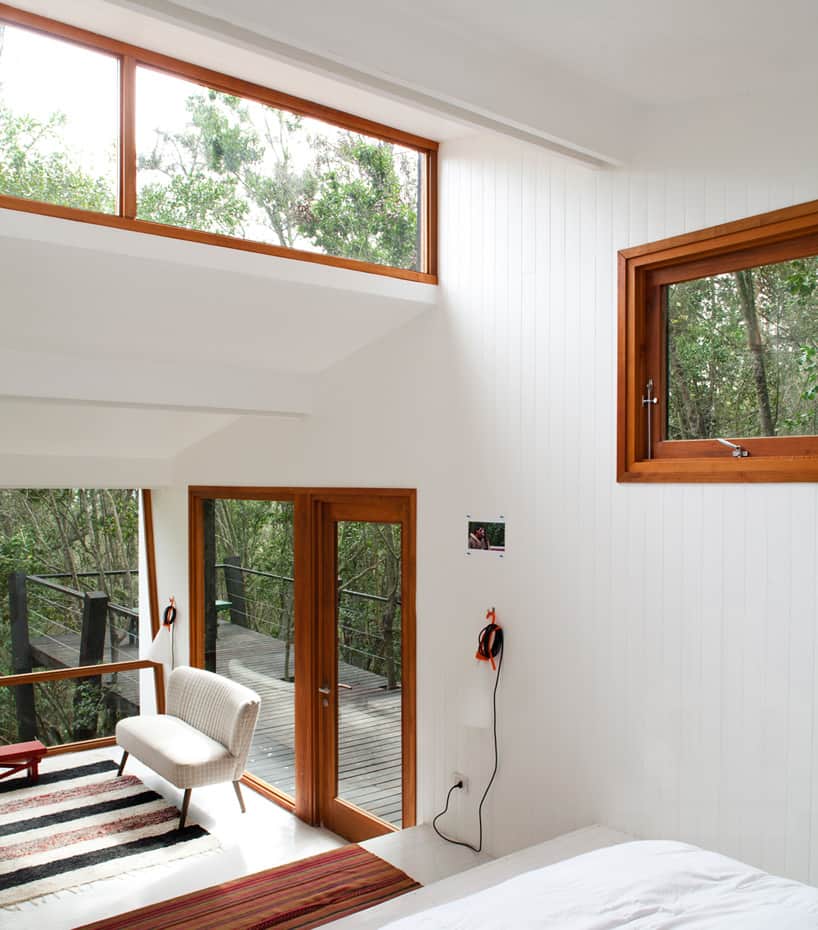
The social zone features a sloped ceiling that ends at a vertical wall filled with clerestory windows. This is because the cabin is divided in two levels with 2 deep and tall steps running the width of the cabin leading up to the bedroom.
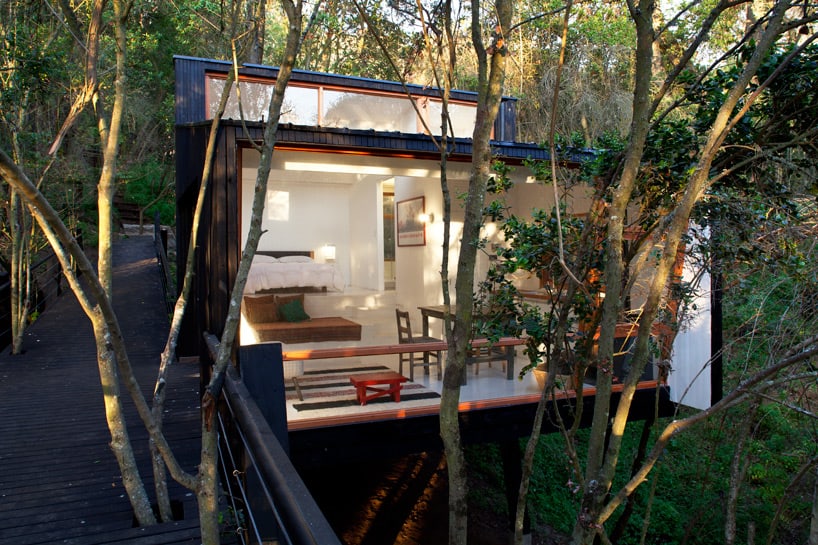
The deep steps double as seating with the tread being the seat and the riser being the backrest. It’s a clever and efficient use of space.
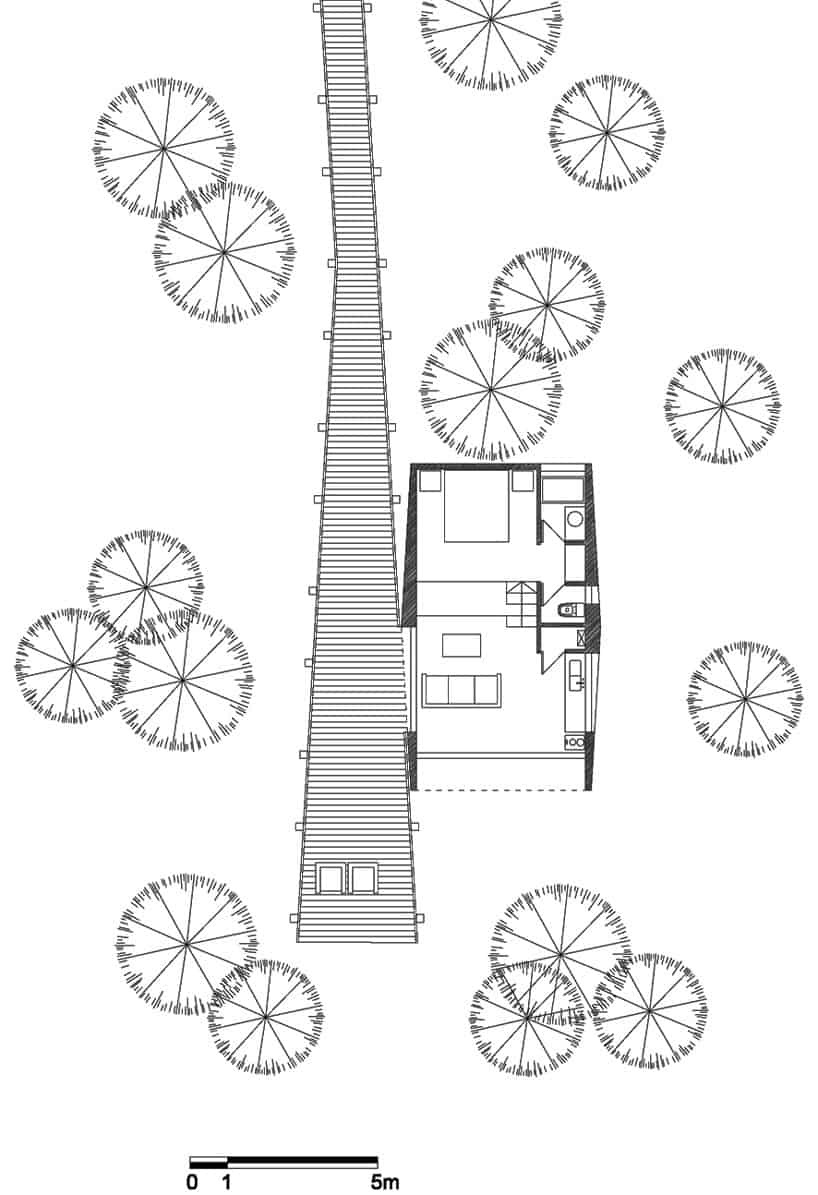
All the plumbing runs along one wall with the kitchen in the social area and the bathroom off of the bedroom.
Unarquitectura
Photography by Natalia Vial

